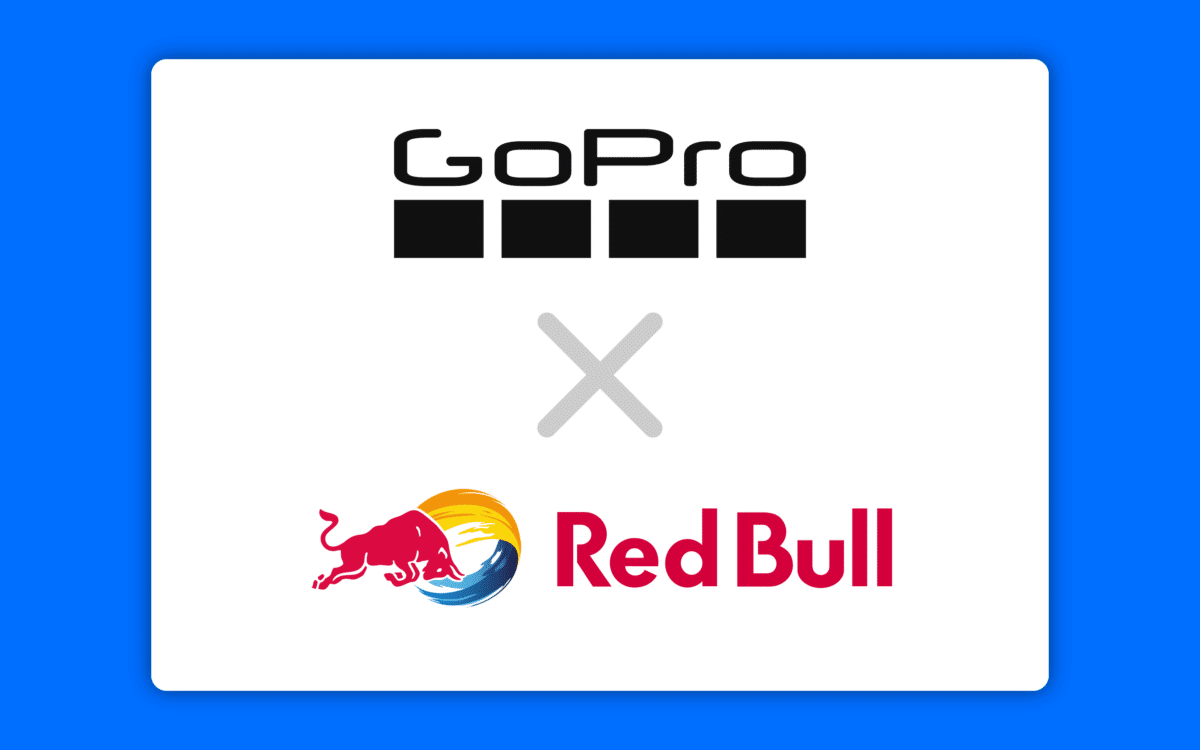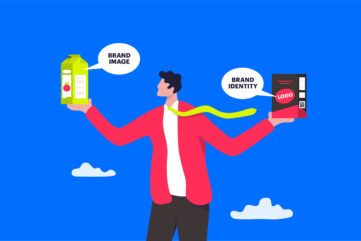What is dual branding? The definition of dual branding

What is dual branding? If want to know more about dual branding, you’ve come to the right place! Today, we’re going to define dual branding and provide examples that will help you to perfect your dual branding strategy. So, let’s get started…
Brand strategies come in a variety of different shapes and sizes today. Dual branding, or complementary branding, is just one example of a way two brands (or more), can expand brand reach and unlock new branding opportunities.
With dual branding two companies come together to promote each other and add to the identity of an existing brand. Unlike co-branding, where companies work together on the development of a new branded product, dual branding uses existing products and services.
Betty Crocker and Hershey’s complemented each other with a dual branding strategy when Hershey’s recommended making fudge brownies with the Betty Crocker mix. At the same time, Betty Crocker recommended adding Hershey’s as the go-to brand for extra chocolatey brownies.
The result? Two companies with better brand awareness and impact.
Let’s take a closer look at the definition of dual branding.
Dual branding definition: What is a dual brand strategy?
Before we can look at dual branding examples and strategies, we need to establish what dual branding actually means. A brand, as you may already know, is all the components responsible for identifying and differentiating a company.
Dual branding is an effort to bring multiple companies together to enhance brand identity, recognition, and awareness.
Crucially, dual branding isn’t the same as co-branding, where organizations collaborate on the creation of a new product or service. It’s also not the same as merger or acquisition branding.
M&A branding involves creating an enhanced or expanded brand when two companies are legally joined through a transaction.
Dual branding generally involves one company recommending another brand as the perfect accompaniment or complement to their product. In some cases, it may also involve one company selling the products of another.
For instance, Dominos’ Pizza could advertise its pizza deals with Ben and Jerry’s Ice cream as the ideal night in.
Used correctly, dual branding is an excellent way for two companies to collaborate and create unique value for respective customers. In many cases, dual branding is also a valuable way for a growing, smaller company to gain recognition by partnering with a larger organization.

What is dual marketing? Dual marketing definition
Dual marketing, or dual distribution marketing isn’t exactly the same as dual branding. But, dual branding strategies will often involve some dual marketing. With dual branding, various elements of different companies come together to create a unique value proposition for a customer.
McDonalds offers Coca-Cola products as its go-to beverage for anyone enjoying a fast-food meal.
The addition of the Coca-Cola brand into the McDonald’s company means McDonalds can use the Coca-Cola logo, marketing assets, products, and unique selling points to enhance its own offering.
At the same time, Coca-Cola gets to advertise itself as the official drink choice of McDonalds, leveraging dual distribution marketing strategies to advertise the two companies together.
Dual marketing involves two companies working together on an advertising strategy – but it doesn’t necessarily include the combination of multiple brand elements or products.
For example, Nike might work with Powerade to advertise itself with a competition which involves customers being able to win prizes from both organizations. However, beyond this campaign, the two groups may not work together at all.
Dual branding benefits: Is complementary branding a good idea?
Dual branding examples are evident throughout multiple industries. A lot of technology companies are using a dual branding strategy since 2020, to help support employees and professionals working in remote environments.
This often involves webcam and speakerphone companies advertising tools like Microsoft Teams and Zoom as the best software for their hardware.
Microsoft even has its “certified for Teams” accreditation to offer companies interested in a co-branding effort. This additional stamp of approval on a product is similar to getting a certificate from a leading government organization or regulatory group.
Dual branding is a powerful tool for increasing sales and market opportunities, but it does need to be used with caution.
Some of the major benefits of dual branding include:
Cost reduction
Dual branded companies can reduce some of the money they spend on marketing, because dual branding often comes with dual marketing strategies. Companies can access each other’s marketing collateral and brand reach to connect with new audiences.
Market penetration
Most dual branding efforts involve bringing the existing impact of another company into the branding and identity of another organization. People might not know much about the Teavana brand, but everyone knows Starbucks.
By advertising “Teavana from Starbucks”, Teavana gains more attention from a new variety of customers, as well as an additional distribution channel.
Diversification
The underlying purpose of dual branding is to bring multiple unique selling points together in a new market offering, designed to help organizations capture more consumers.
Bringing multiple differentiators together helps to diversify both brands and give them a bigger place in their chosen industry.
Skills and expertise
Combining two brands for a distribution, marketing, and brand awareness strategy doesn’t just mean connecting logos and colors. Brand specialists can come together to access the expertise of specialists from both sides.
The combined skills of both companies make it easier to attract investors and customers.
How does a dual branding strategy work? Dual branding examples
A double branded solution from two companies needs to enhance the identity of both companies, boost awareness, and encourage recognition. Crucially, however, both businesses also need to ensure their individual identities remain strong, so the two offerings don’t just blend together.
The best complementary branding examples respect the essential brand guidelines of both companies when coming up with a way to better serve a specific audience.
A dual branding strategy needs to:
Consider complementary brand identities
The two brands working together need to complement each other with aligned identities. This doesn’t necessarily mean two companies need to come from the same industry. At first glance, Red Bull and Go Pro are both quite different companies.

However, they both market to ambitious, active people. Combining the two brands for the Felix Baumgartner supersonic free fall allowed the two companies to connect for a shared audience.
Deliver unique benefits to the end customer
Complementary branding, or dual branding, works best when two companies work together on addressing a need for their chosen market. The combined selling points of the two groups make it easier to overcome a specific problem.

Microsoft and Salesforce’s joined dual branding efforts don’t just ensure both companies can reach a wider audience. They also mean Salesforce users can more easily implement data from their CRM into their Microsoft Teams environment too.
Leverage the right brand assets
Most dual branding solutions will involve combining certain brand assets, like logos, marketing collateral, and even products. While co-branding efforts often lead to the creation of new assets, and even new logos, dual branding places assets side by side.
Leveraging the right brand assets in the right order is important to ensure both companies get equal attention.
Implement dual marketing and distribution techniques
Once the two companies have successfully aligned, it’s important to ensure they can both advertise to the right market as effectively as possible. As mentioned above, this is why dual branding examples often come with complementary branding marketing strategies.
Advertising might include something like a new product design with “brought to you by”, or “in partnership with” on the label.
How to choose the right dual branding strategy
Choosing the right dual branding strategy starts with figuring out which company you’re going to work with on your new campaign. As mentioned above, the best dual branding efforts come from companies complementary to each other.
In the case of Betty Crocker and Hershey’s, a chocolate syrup is a perfect complement to a brownie. Of course, the connection won’t always be obvious.
Rather than choosing a dual marketing partner based exclusively on their industry, companies should think about finding a brand beneficial to their brand image. Is your company a luxury clothing brand, a fun, immature organization? A sophisticated business?
Choose someone with a complementary identity to enhance your existing image.
Once you choose a suitable company to boost your image, think about the kind of products you should combine. Most dual branding efforts involve bringing two very specific products together, rather than the full brand portfolio.
For instance, when BMW created the new BMW i8, Louis Vuitton designed an exclusive four-piece luggage set specifically for the car.
Which products of yours can align with the products of the other company to create something beneficial for your target audience?
Dual marketing isn’t as simple as placing two logos side-by-side and calling it a day. The partnership needs to offer something valuable to customers too. This doesn’t have to mean creating a brand-new product, like you might with a co-branding effort.
However, it should ensure the two companies coming together does something beneficial for the target audience.
Dual branding: Making it work
Making a dual brand campaign work means choosing everything from your combined products, to your target audience carefully. It also means knowing when to step back when a co-branding effort isn’t having the right influence on your company.
Shell, a Dutch fuel company, once had a pretty strong dual branding relationship with Lego, a Danish toy company. Shell placed its name and branding on a multitude of Lego toy sets, like gas pumps and race cars, helping to give the business more brand awareness.
At the same time, Lego benefited from having a recognizable name on its products, giving it more authenticity.
In 2011, Shell and Lego were forced to end their relationship. Greenpeace pointed out the problem of having children playing with toys dual branded by a petrol company with a negative impact on the planet.
At the time, Shell was drilling for oil in the artic aggressively, harming the planet and our sustainability.
Shell’s questionable record in regard to environmental practices, and people started to question whether Lego approved of these activities, or even engaged in poor eco-friendly behavior too.
The result was rising public outrage, and the companies eventually parted ways so Lego could preserve its identity as a welcoming toy company, suitable for all ages.
Making dual marketing and dual branding strategies work means taking the time to consider your options carefully, but also being aware of when a connected company starts to harm your brand image.
Even if two companies seem to go together perfectly at first, there’s always a chance the connection could sour in the future. Auditing your dual branding efforts, just like you audit your marketing and brand assets, is crucial to ongoing success.

Top tips for a dual brand strategy
Dual branding can be an excellent way for two companies to grow and develop more memorable identities. At the same time, dual branding efforts combined with dual marketing strategies improve distribution strategies for each company and strengthen the potential to gain new revenue.
There are, however, a lot of pitfalls to avoid.
Complementary branding, dual branding, and even co-branding involves combining your assets and strategies with another company. This means there’s always a chance you could end up discovering the two entities you’re trying to combine simply don’t mix.
To ensure you get the most out of your dual branding strategy, remember to focus on:
Due diligence
Before agreeing to make a connection with any business, ensure you learn as much as you can about the brand. What are their values, what do they stand for, and does the identity align with your own company?
Is there anything hidden under the rug of this company’s identity which might harm your image if it were to come to the surface?
Commitment
Be ready to take the time to come up with branding and marketing strategies which makes sense. These efforts should never be rushed. Do your market research and learn more about what your audience needs.
Focus on finding a solution which supports the target market you want to connect with.
Communication
Constant communication between the two brands is absolutely essentially. This helps to ensure both companies stay on the same page when it comes to highlighting specific brand values and purpose.
Ready to try dual branding?
Ultimately, dual branding can be a very valuable tool for a lot of businesses, particularly those in search of additional growth and opportunities. Of course, like any branding strategy, dual branding won’t always be the right solution for every brand.
Before you rush into a collaboration with another company, make sure you’re aligning yourself with an organization which is going to enhance and support the image you want to build. If the connection between you and this other business sours over time, make sure you’re ready to step back.
Fabrik: A branding agency for our times.

We’ve built our reputation, building brands for other people.
Do you need to bring a new brand to life or breathe new life into an existing one? If so, let’s start a conversation
















